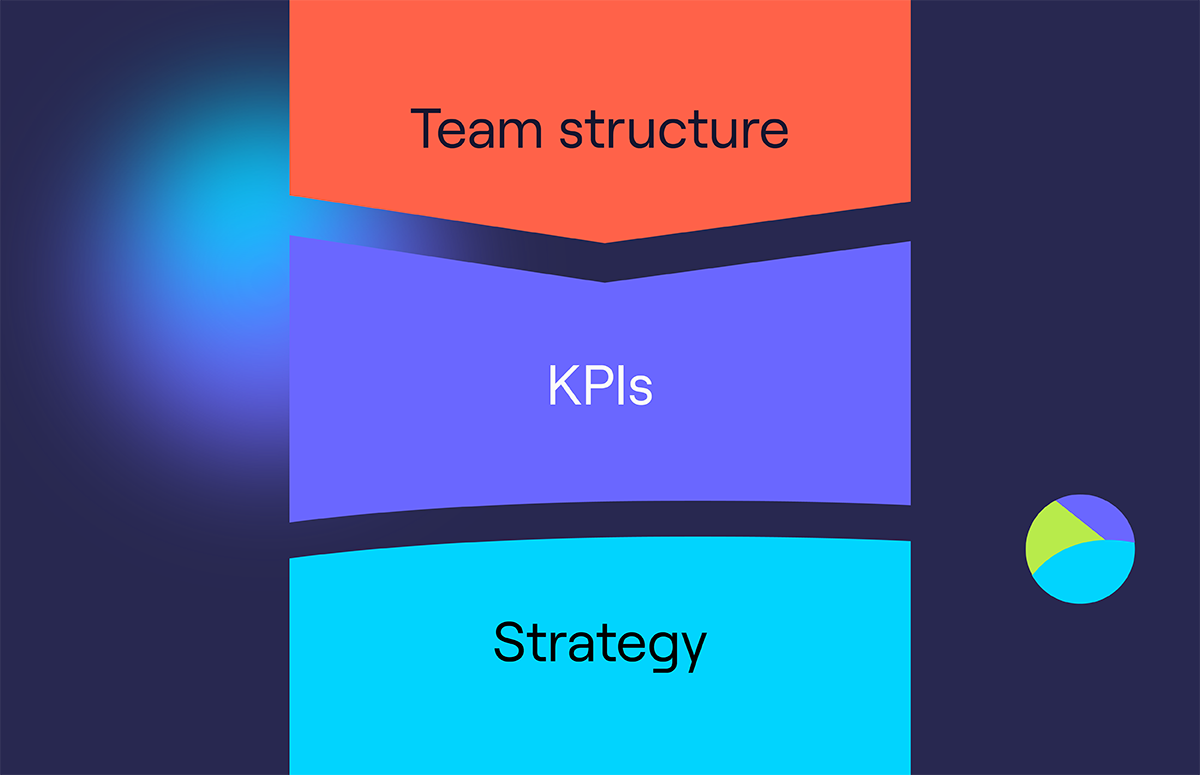Data Hygiene Checklist: Ensure Your Data is Clean & Reliable
Data hygiene resources on this page:
Maintaining data hygiene is vital for accurate go-to-market planning, forecasting, segmentation and ABM strategies.
Yet, many organisations struggle with outdated, inconsistent, or duplicate records. Data is often siloed across teams, leading to significant inaccuracies—70% of revenue leaders lack confidence in their CRM data.
In this guide, we’ll discuss actionable data hygiene strategies for effective B2B data management that drives revenue growth.
What is data hygiene?
Data hygiene refers to the processes and practices used to ensure that data is clean, accurate, consistent, and up-to-date. It involves identifying and correcting errors, removing duplicates, filling in missing information, and maintaining uniformity across data entries.
What’s the difference between data quality and data hygiene?
Data quality and data hygiene are closely related concepts but focus on different aspects of managing and maintaining data.
Data quality
Refers to the overall condition of data and its ability to meet the requirements for intended use. It’s a broad, high-level concept that encompasses various attributes of data.
Data hygiene
Data hygiene refers to the practices and processes used to maintain and improve the quality of data over time. It’s a subset of data quality management focused on cleaning, maintaining, and updating data to keep it valuable and error-free.
Why is data hygiene important?
The goal of data hygiene is to improve the quality and reliability of data so that it can be effectively used for decision-making, analysis, and operational purposes.
Here are the top six benefits of CRM data hygiene:
1. Improves segmentation
Clean data enables comprehensive customer profiles, helping B2B sales and marketing teams refine customer segments and optimise the customer journey.
2. Helps you understand your ideal customer profile
Clean and enriched data is crucial for accurately defining your ICP.
This understanding reveals insights into customers’ needs and behaviours, facilitating targeted outbound strategies and personalised experiences.
Enhanced customer engagement leads to increased lead generation and conversion rates.
3. Improves lead scoring
Maintaining data hygiene enhances prospecting efficiency for sales teams and boosts win rates.
Accurate CRM data helps RevOps identify high-potential leads through predictive grading, allowing teams to focus on quality prospects and optimise conversion rates.
4. Improves lead routing
With accurate and updated data, organisations can route leads effectively based on criteria such as company size, location, or industry.
This improves response times and ensures timely engagement with potential customers.
5. Enhance customer success
Data hygiene aids in identifying high-risk customers and expansion opportunities, encouraging broader product adoption and reducing churn.
Accurate information leads to quicker, more precise responses to customer requests, increasing customer lifetime value.
6. Ensures compliance
Data hygiene is crucial for B2B compliance and data privacy, helping organisations stay compliant and secure personal information from potential fraud.
Looking for more insights? Our RevOps guide will help you establish a Single Source of Truth in your RevOps function!
Click here 👇
5 steps for better data hygiene
Maintaining CRM data hygiene is vital for organisations that rely on accurate B2B data for decision-making.
If you don’t keep your data clean, you risk the following:
- Poor data can lead to up to a 12% loss in revenue.
- Data quickly becomes stale; regular updates are essential to protect ROI.
- Gaps in data hinder insights, leading to incorrect reporting and predictions.
- Incomplete data skews understanding of customer segments and ideal customer profiles (ICPs).
- Incorrect audience segmentation can lead to misfocused business strategies, neglecting key areas that drive conversions.
- Poor data hampers personalised customer experiences, negatively impacting ROI, conversion rates, and satisfaction.
- Data inaccuracies in contact information (names, job titles, emails) can hinder outreach and waste time.
- Misleading information results in reps reaching out to the wrong prospects leading to significant losses.
Here are five steps to follow to keep on top of your data hygiene and avoid the above-mentioned challenges:
1. Conduct regular data audits
Over time, your CRM data can become disorganised—errors occur, duplicates pile up, and some records become outdated. Conducting regular audits allows you to identify these issues before they become significant problems.
Schedule periodic reviews of your data to identify duplicates, outdated information, or inaccuracies. You can use automated tools or do manual checks to correct errors and standardise formats.
How to do it:
- Review your database every 3-6 months.
- Look for incomplete fields, duplicate entries, and outdated records.
- Use tools like Excel, Google Sheets, or data hygiene tools like Cognism to help automate the process.
Darwinbox uses Cognism, and they’ve seen impressive results:

“We tested 5 industry players for match rate and the percentage of enrichment occurring.” “Overall, Cognism had the most accurate contact details, and for US data alone, it was easily greater than 90% accuracy on data quality.”
2. Establish a data governance framework
Inconsistent formats for company names, job titles, and email addresses can lead to confusion within your system.
How to do it:
- Create clear policies and processes for data collection, storage, and usage.
- Assign team members responsibilities for ensuring data accuracy and compliance with regulations, such as GDPR.
- Regularly review these policies to adapt to changing business needs.
Using a B2B data enrichment provider like Cognism, you can ensure that your B2B database is standardised across your organisation.
These tools streamline contact data management by automating formatting to ensure consistent job titles, industry classifications, and company names.
They also maintain database alignment, keeping your CRM or sales tools, such as Salesforce and HubSpot, updated with clean data.
With easy integrations, Cognism automatically standardises incoming leads for a more efficient workflow.
3. Remove duplicates and errors
If poor-quality data enters your system, it can lead to wasted marketing and sales efforts. Therefore, you must ensure your data is correct from the start.
If you use multiple platforms (e.g., CRM, marketing automation tools), ensure they are integrated to avoid data silos. Implement de-duplication tools to merge duplicate records and create a single source of truth for your data.
Jeff Ignacio, Head of GTM Operations and Growth at Regrow Agriculture, said:
“RevOps serves as a single source of truth; it should govern your GTM motion, and your GTM notion needs to impact your revenue. Data-driven insights and decision-making underpin these three notions.”
4. Validate and update data regularly
B2B data can become outdated quickly, as people change jobs, companies expand or shrink, and contact information is updated.
Adopt effective methods for regular maintenance and updates to keep your database accurate and current.
Use validation tools and processes to ensure data accuracy at the point of collection. This could include requiring mandatory fields, validating email addresses, or using dropdown menus instead of free text for critical fields like job titles or industries.
You could also consider implementing a Data as a Service (DaaS) solution, which would help automate the process for your business. DaaS is a cloud-based solution that provides organisations with real-time data, tapping into their CRM, data lakes, and databases through APIs.

The DaaS model makes data easy to integrate and access, without the burden of infrastructure. Cognism’s DaaS, for example, offers flexible delivery options to integrate B2B data in the format and frequency of your choice:
- API & Flat File delivery: Real-time enrichment or scheduled batch drops via Snowflake, S3, Google Cloud, Databricks or SFTP
- Data quality & compliance: Audit-ready metadata and consent trail are aligned with GDPR, CCPA, and PECR.
- Continuous value realisation: ROI benchmarking, usage health reviews and expansion scoping.
5. Train employees on data best practices
Educate your team about the importance of data hygiene and provide them with the tools and knowledge to maintain it. Encourage habits such as updating records after client interactions and verifying data accuracy before adding them to your systems.
Following these steps ensures that your B2B data is accurate, reliable, and actionable, leading to better decision-making and improved business outcomes.
Data hygiene best practices
1. Define and standardise data fields
Not all data is created equal, and instead of being overwhelmed by vast amounts of data, focus on understanding what data truly matters to your business.
Here is what you can do in the data discovery phase:
- Identify all data repositories such as CRMs, ERPs, spreadsheets, cloud storage, APIs, and local databases.
- Analyse the data types stored, such as text, numeric, binary, transactional, metadata, or IoT data.
Then, look into data entry standards and define clear formatting rules. Those could be the following:
- Dates: use ISO 8601 format (YYYY-MM-DD).
- Phone numbers: include country codes (for example, a US country code) and follow a consistent format (+1-555-555-5555).
- Addresses: adhere to postal service standards.
- Create predefined dropdown options: this could apply to some fields like job titles, industries, and regions.
Sid Kumar, AVP of Revenue Operations, GTM Strategy & Planning at Databricks said:
“It’s easy to get caught up in data for data’s sake, and more is not necessarily better in this context.”
“I think being targeted and focused about what you’re using your data for and how it’s helping you connect your go-to-market strategy with your customers is essential.”
Data often has a shelf life, and knowing when data is 70-80% accurate is usually enough to base healthy and conscious decisions on.
As Sid explained:
“You sometimes have to accept it’s never going to be perfect. There’s no such thing as ‘perfect’ data, and as soon as it becomes perfect, normally it’s outdated and stale.”
2. Adopt segmentation
With clean data, teams can create more complete customer profiles and better comprehend their audiences and customer behaviour.
Jeff said:
“You have to start by looking at what segments matter.”
“Generally, how you segment could be based on demographic, firmographic or psychographic data, but data can be faulty or hard to come by. When you don’t have third-party enrichment tools that could provide you with the best in data for those segments, this can lead to some pitfalls.”
Segmentation can inform your GTM strategy as marketing and sales teams can generate relevant and refined customer segments and optimise the customer journey.
As Sid shared:
“You need to focus on how data is helping you connect your go-to-market strategy with your customers.
“You should start top-down and get a real perspective of your total addressable market. Then you can understand what segment of that total addressable market you feel you have the real right to win as a company.”
“You have to go and look at what data you need to understand the firmographics, demographics, technographics and everything about your prospects in that segment.”
“That way, you can understand where you’re going to orient your go-to-market motions around and get smarter about your prospects and existing customers.”
3. Enrich your data
Your organisation must balance internal and external data. Internal data highlights your company’s customers, transactions, and potential partners.
However, when it comes to prospecting, segmentation, and forecasting, these might not provide a complete and comprehensive enough view when defining your market. They can also include inaccuracies.
As Sid Kumar said:
“You tend to get more data as a company starts to become larger, but you’ve really got to find a balance between first-party and third-party data.”
“I think you’re naturally going to have a bigger mix of first-party data down in the lower end of the market, and then you’re going to have to compliment that with third-party data when you start to go upmarket.”
Refreshing and enriching your data with third-party providers is crucial for data hygiene. Third-party data is more accurate and less error-prone, making it cleaner and more current.
As contact information and the marketplace change, data decays quickly. This means that sales, marketing and CS reps risk sending messages to the wrong contacts.
Data hygiene software like Cognism can provide accurate phone numbers and enrich contact data instantly to clean up historical contact records.
4. Leverage automation tools
You can automate data integration through API connectors, which link data sources to the business applications that need them.
This streamlines data provision and improves the timeliness of data delivery.
Human input error is inevitable and a primary cause of bad data. You can use tools and systems to automatically enrich, clean and validate data to ensure It is actionable and complete.
Cleansing systems through automated data hygiene can also help remove duplicates. Duplicate records cause confusion, waste storage space, and lead to inaccurate reporting.
5. Remove silos
In many organisations, it’s common for sales and marketing teams to operate in different systems and with their own data standards and formats.
That’s why creating a data hygiene culture across your teams is crucial.
Integrating databases and encouraging collaboration between GTM teams can ensure alignment on data accuracy and remove silos.
It also helps ensure data security across your organisation.
Data security protects the organisation and its stakeholders from breaches and data loss. Use role-based permissions to limit access to sensitive data based on job requirements. Audit access logs to ensure compliance with data policies. Encrypt sensitive data both in transit (e.g., via HTTPS) and at rest (e.g., AES-256 encryption).
For compliance measures, check if your data handling complies with relevant regulations like GDPR, HIPAA, or CCPA. Establish processes to monitor and report data breaches promptly.
Implementing these best practices ensures that your B2B data remains accurate, actionable, and aligned with your business objectives.
For more data hygiene tips, take a listen to this podcast 👇
Use Cognism to establish consistent data hygiene
With Cognism’s Sales Companion and Enrich, your revenue team is empowered with accurate, actionable data to overcome data hygiene roadblocks and achieve predictable success.
Siloed data creates inefficiencies and limits collaboration between your go-to-market (GTM) teams. Cognism breaks these barriers by providing a single source of truth.
With reliable, high-quality data, your sales and marketing teams can align on:
- Ideal customer profiles (ICPs).
- High-potential accounts.
- Personalised outreach strategies.
According to Validity’s report on The State of CRM Data Management in 2024, “Aligned sales and marketing teams can increase win rates by up to 38% and save businesses from losing at least 10% of their yearly revenue due to poor collaboration.”
Thanks to Cognism, you can say goodbye to disconnected processes and hello to seamless alignment.
Cognism’s Web App allows you to define a clear sales strategy across departments, ensuring each team is focused on the right accounts.
Book a demo to get started 👇

.png?width=1920&height=1080&name=RevOps%20data%20infrastructure-02%20(2).png)
.png?width=1376&height=974&name=Data-enrichment-info%20(1).png)

/Lead%20routing%20tools/lead-routing-tools-resource-card.webp)

